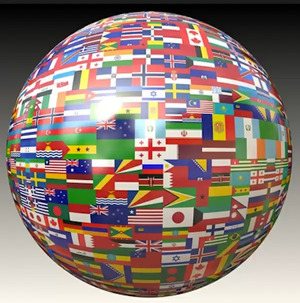At Search Laboratory our specialty is international search SEO, so we are exposed to many clients, large and small, at different stages of the process to improve their online presence in foreign markets. This invariably involves translating their website and their search marketing campaigns. Unless you have done this a few times before, you are unlikely to avoid the common SEO mistakes that litter your way. Get any of the key components of successful internationalization wrong and the consequences can be devastating. At best you may get limited or no search rankings; at worst you can waste money and damage your reputation.
1. Translating Keywords

These are still the biggest and most common SEO mistakes we see in international SEO and more often in global PPC campaigns. Translators are excellent at translating sentences faithfully. They study to Masters level to do this efficiently using electronic glossaries and memory tools. However, faithful translation does not make for an exhaustive and targeted keyword set. This article explains the problems in full but in summary:
- Translators tend to translate one keyword to the best keyword in their language. This means nuances of the same word in English will translate to the same word in their language, duplicating keywords.
- Keywords in the translator’s language that do not have an English equivalent will never be generated. These could be big-money keywords and you will never find them.
- PPC Ad Groups will contain a mix of head terms as translators attempt to introduce variety into their translations. This means ads are not tightly bound to keywords, quality score suffers and therefore the site struggles to compete.
Keyword research should be performed by native search marketing professionals. Speaking the language is not a qualification to be able to perform effective keyword research in a given language. You would never randomly select a person to perform your English keyword research who had no knowledge of search marketing just because they had a good command of English, so don’t do it for foreign languages. Foreign markets are as competitive as English now, so treat them the same.
2. Search Before Translation
If an SEO plan is integrated into the website translation process, a lot of time and money can be saved. Not doing this can leave a confusing mess, with SEO recommendations repeatedly being ‘undone’ by the translation process. An understanding of the translation workflow is essential. This changes from one translation vendor to another, but every quality translation company uses electronic glossaries and translation memory software (check that yours does – if not you will be paying too much and getting lower-quality results!).
Glossaries mean that you can inform the translators, in advance of the translation process, certain words that you would like translated in the same way every time. They were invented to help companies that want consistent use of certain marketing terminology. McDonald's, for example, wants ‘I’m lovin’ it’ to be translated in exactly the same way in every language. If that phrase appears anywhere in any of their literature or on any page online, they do not want a translator to make their own decision as to the best way to translate it. The phrase is built in to the McDonalds electronic translation glossary and every translator who translates for McDonald's will use this glossary to ensure consistency.
The great news is that SEO keyword pairs can also be pre-loaded into glossaries. Through mother-tongue keyword research, we can determine that the best term for ‘car rental’ in France is ‘location de voiture’ (and in British English is ‘car hire’!). These term pairs can be loaded into the glossary, so that when the web pages are translated the translators use the pre-determined terminology and the translated pages are automatically SEO’d. The mistake people make is to only consider SEO once the translation process is already complete.
3. Repeatedly Deleting SEO Recommendations
This is an incredibly common mistake:
- The SEO company makes some recommendations on the French page to make it more search-engine friendly, changing the terminology slightly in the titles and descriptions, plus copy on the page to tie in with keyword research. These changes are implemented on the French version of the site.
- The English version of that same page is changed due to a normal update.
- A translation process kicks off and undoes all of the SEO recommendations in step 1 above.
The reason the SEO changes get undone is due to the way modern translation companies translate files using translation memory software. A bit like the glossaries, this software is excellent as it ensures consistency and saves time and money by electronically recognizing what has been translated before and highlighting new areas of text to the translators. However, ignoring the part this software plays in the translation workflow spells disaster for the SEO campaign. The solution is generally fairly straightforward but depends on the software and workflow in place. The SEO changes made must be reflected in the translation memory database or else the site will see a constant reversal of the optimizations.
4. Translation of Content Marketing
Content marketing forms the backbone of any SEO campaign. The process that we use in English here at Search Laboratory goes like this:
- Come up with an idea g. Insightful piece on interior design for a client that sells rugs.
- Plan and Research Interview some interior designers and prominent bloggers for specialist content.
- Create Write the piece in an engaging way, including imagery.
- Launch Put the piece online, informing the contributors and influencers as it happens.
- Promote Follow up with social and other outreach and online activity to ensure the piece gets traction.
The process above gives the content the maximum chance of success in terms of views, engagement, sales, orders, bounce rate, and links. However just because it was a good idea in the UK or another market, does not mean a translated version hosted on your French site will be as well received.
Foreign markets are competitive, so the same level of care and the same processes need to be put in place to perform content marketing in these markets. To do so requires natives of that country to cover the processes above, including research, outreach, and ensuring the idea is transferable to that culture. It is a specialist job, so don’t do the hard work creating great content, only to let it then fail through poor execution.
5. Malformed Code
This should be the easiest part to get right, but do make sure your Hreflang tag is properly formed. It should look something like:
<link rel="alternate" href="//www.brightedge.com/www.mypage.com" hreflang="es-es" />
The code works by informing Google and other search bots specifically about the language of the page, and which page it should serve to which language in the query. This article describes the use of the tag in some detail and shows how to implement it.

